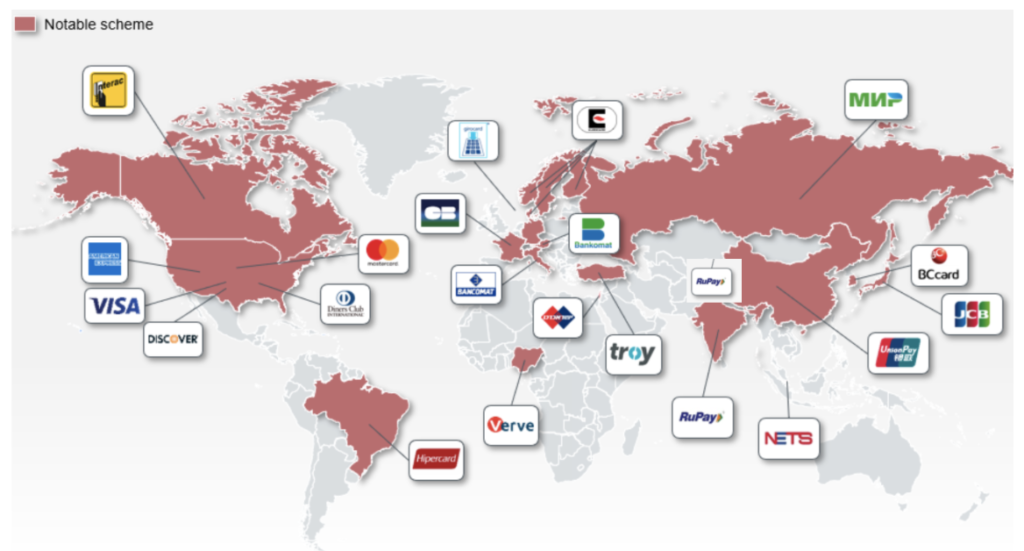Card schemes enable a simplified and guaranteed exchange of money between merchants, customers and their banks, by operating international networks and setting uniform standards. More specifically, they define rules for the routing of payment authorizations and settlementSettlement settlement The process of transferring funds from the issuer to the acquirer. requests in point-of-sale and e-commerce transactionsTransactions transactions Interactions where value is exchanged for goods or services. between merchantMerchant merchant An individual or business that accepts payments in exchange for goods or services. acquirers and card issuers, as well as ATM withdrawals or purchases with cashback transactions.
- Payment infrastructures are vital to the functioning and stability of economic systems;
- Card schemes remain an essential part of this crucial infrastructure
- The card scheme ecosystem is globally characterized by: a) a large number of local domestic schemes and b) a few global schemes. Global schemes tend to invest massively into adapting to the high rate of change in the payment market – often by offering services without additional fees (“follow-the-free”), making them increasingly able to out-compete even well-established domestic schemes in their home markets
- The market is thus more and more dominated by a triumvirate of global schemes: VisaVisa visa A leading global payment technology company connecting consumers, businesses, and banks., MastercardMasterCard mastercard A global payments network enabling electronic transactions between banks, merchants, and cardholders. (both U.S.) and UnionPay (China), which between them form a virtual oligopoly
- Trends facing Card Schemes:
- In recent years, major Card markets such as US and Europe have witnessed regulations that intend to regulate interchange feesInterchange Fees interchange-fees Fees paid by the merchant’s acquirer to the cardholder’s issuer for transaction processing. and promote competition.
- In countries like China, India and Russia, Domestic Card Networks have been launched with the support of their Central banks.
- There is a growing interest and adoption of Real-Time Payments across the globe and incumbent card players have evinced interest due to its potential to emerge as a viable alternative to Card networks.

A three layer model is used to compare payments schemes.
Policy: The semantics of the payment scheme. This includes refunds policies, and the liabilities incurred by customers, merchants and financial institutions.
Data flow: The requirements for storage of data by and communications between the parties. This includes not only the data flows for payments themselves but also for refunds, account enquiries and settlement.
Mechanism: The methods by which the necessary securitySecurity security Measures used to protect transaction data from fraud and cyber threats. requirements for messages and stored data are achieved.
